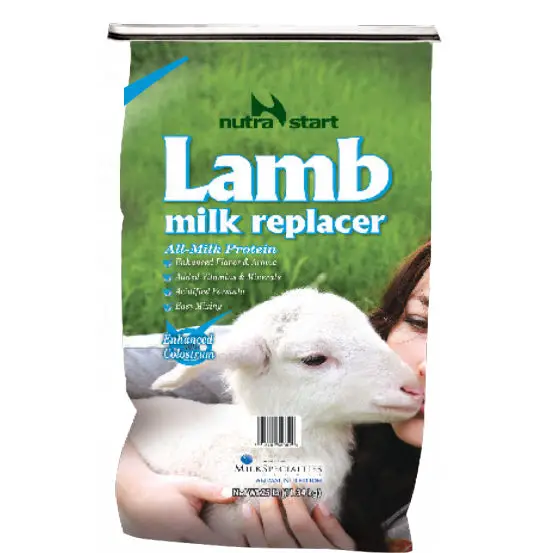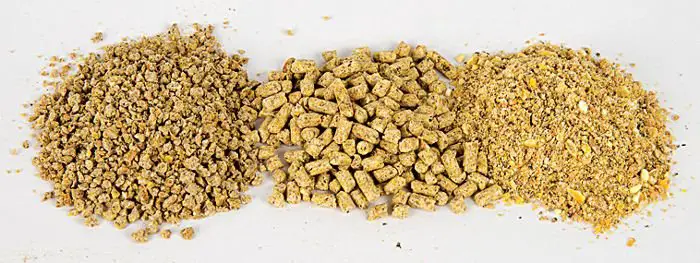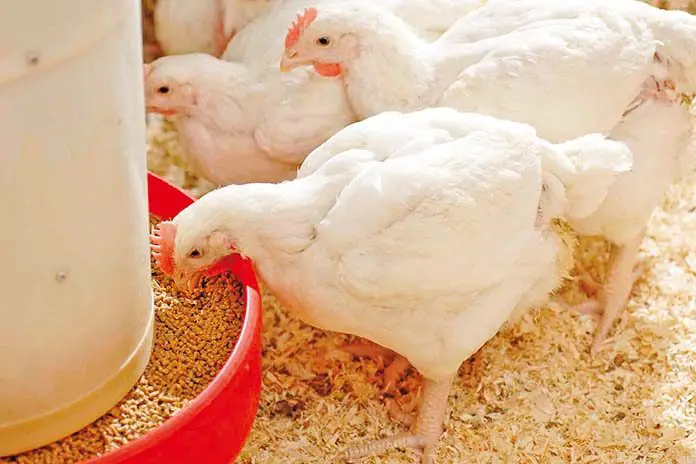Raising lambs for meat is one of the most profitable ventures in the animal production business. However, there is a saying among sheep farmers that when you see two sheep put their heads together they are discussing how they want to die. Sheep seem to be incredibly fragile animals but because of their feeding habits can pick up things that can kill them like worms, noxious weeds, and/or metal objects included. Lambs will start nibbling grass from day one but before their ruminant digestive system functions fully they need milk to get all their required nutrients. There are cases where the ewe cannot provide any, in event of death, or enough milk to support rapid growth for the lamb hence the farmer has to feed milk replacers. Milk replacers are mostly made up of cow milk both in fresh or powdered form but other ingredients are added to balance out the replacer and provide other benefits like boasting immunity.
Contents
What is a Lamb Milk Replacer?
A milk replacer is any substance that is used to feed a lamb in place of milk and is able to supply almost all the nutrients usually present in the ewe’s milk. Many commercial preparations are available that farmers can buy and feed to their lambs, however with the right knowledge of the constituents of ewe milk farmers can make their own milk replacers. However, it’s critical that the lamb gets access to colostrum 6-12 hours after birth to give it a boost of nutrition and antibiotics before being fed milk replacers.
Common Milk Replacer Ingredients
The ingredients used to make milk replacers must be able to safely supply the nutrients required by the lamb without causing any deficiencies or complications in gut function and development. Coffee creamers will not make the cut here as they will not be able to supply much in terms of nutrients for the lamb. The final milk replacer should have the following key features:
- A proper fat to protein balance to provide energy and protein for the lambs’ growth
- Enough fatty acids in the right amount for growth
- It should be able to support proper gut microflora growth hence also immunity
- A preservative to allow safe storage
Below is a list of common ingredients used to make milk replacers.
Milk and Products
Raw milk from other sheep, cows, and goats can the fed as a sole lamb milk replacer but in most cases, it is mixed with other ingredients to make a much richer mix that meets all requirements for growth. Powdered or evaporated milk can also be used to make replacers when diluted or mixed with clean water. The advantage here is the replacement is very close to the milk the lamb would normally get from its ewes’ milk.
Eggs
To support the rapid growth of the lamb enough protein is required for cell formation, although cow milk has on average 3.5% protein this can be improved by adding whole eggs to the milk and mixing them together. Whole eggs have about double the amount of protein as milk, this boasts the protein content of the mix supporting higher growth rates. Eggs are nature’s best and most balanced sources of protein hence their use in milk replacers of lambs is guaranteed to give very good growth results.
Cod liver oil
Fatty acids are crucial in supplying energy to the growing lamb and cod liver oil is sometimes added to milk replacers to provide omega fatty acids and vitamins. The addition of cod liver oil has also been shown to improve the availability of fat-soluble vitamins which helps boast the lambs’ immune system. Cod liver oil can also act as a laxative in case the lamb is constipated.
Glucose
This the cheapest and most readily available source of energy to include in milk replacers. Glucose however serves another role as a carrier of electrolytes across the intestinal walls. Without glucose, electrolytes would be very inefficient and it would be difficult to keep the lamb hydrated.
Honey
Apart from providing energy, honey also has antibiotic properties which help boost the lambs’ immune system and also shield it from infection from non-beneficial bacteria. Honey has also been shown to be helpful in the treatment of gastroenteritis, by helping maintain hydration if the lamb has diarrhea
Bicarbonate of soda
Bicarbonate of soda is made of a sodium cation and bicarbonate anion which makes it useful as an electrolyte in the body by helping keep the lamb hydrated. It can also act as a laxative in cases of constipation.
Pre and Probiotics
Yogurt and other fermented milk or leafy vegetables can be added to milk replacers to act as pre or probiotics. Prebiotics provide the fiber that can be acted on by the gut microflora to supply the lamb with valuable fatty acids while probiotics add beneficial bacteria to the gut to aid digestion. Commercial probiotics are available which can be used in milk replacers with fermented milk products are not readily available.
Example of a Milk Replacer Recipe for Lambs
The following mixture can be used as a complete milk replacer, various recipes exist depending on individual farmer access to ingredients and previous experience. Most farmers swear by their recipes and will use these religiously in their operations, some recipes are also adjusted as the lamb grows mostly by reducing the more expensive ingredients.
- One cup of full-cream milk
- Half a cup of thickened cream
- One whole egg
- One liter of clean water
This list of lamb milk replacer ingredients is not exhaustive, and with a lot of experimentation and knowledge from other lamb farmers can come up with more ingredients as long as they provide the right nutrition to the growing lamb. The right amount of energy, protein, and vitamins should be supplied to the lamb by mixing these ingredients in the right proportions. Extreme hygiene and care should be taken when handling these ingredients to avoid bacterial contamination since most are protein-rich which is a very conducive medium for bacterial growth, especially eggs.




